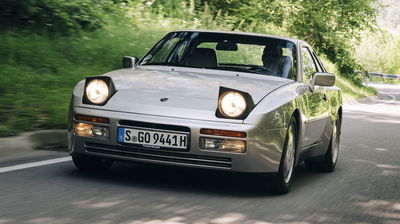The Difference Between Turbos & Superchargers Explained

Turbochargers and superchargers: they both fall under the 'forced induction' umbrella, but how do they work? Here is everything you need to know in just two minutes.
Simple explanation: Turbos and superchargers generate boost by compressing the air which flows into an engine. This in turn means that more fuel can be pumped into a cylinder (because you have more oxygen from the compressed air), which means you get more power from every explosion in a cylinder.
1. Turbocharger
 New Fiesta ST runs a turbocharged 1.6 with 179bhp
New Fiesta ST runs a turbocharged 1.6 with 179bhpTurbos generate boost using the engine's exhaust gases which spin a turbine, which then spins an air pump.
 Turbochargers can spin at up to 150,000rpm, which makes exhaust gases quite hot...
Turbochargers can spin at up to 150,000rpm, which makes exhaust gases quite hot...Turbochargers are lightweight and do not impact on a car's fuel economy at low revs or at idle. This is because the exhaust gases need time to generate enough pressure to spin the turbine. The time that is taken to do so is known as turbo lag. The bigger the turbo, the longer the turbo lag.
2. Supercharger
 New Range Rover Sport uses a 5.0-litre V8 supercharged petrol engine with 503bhp
New Range Rover Sport uses a 5.0-litre V8 supercharged petrol engine with 503bhpUnlike a turbocharger, a supercharger draws its power to increase air compression via a belt that is connected to an engine's crankshaft. Because of its direct link to the engine, a supercharger provides immediate additional boost, while a turbocharger does not (turbo lag).
A supercharger's belt (that is connected to the crank) spins a pulley which is connected to a drive gear which then turns a compressor gear. The compressor gear compresses the air that is fed into a cylinder.
 Image source: www.imgref.com
Image source: www.imgref.comThe addition of a supercharger increases an engine's bhp power by 46 per cent on average. Torque is also boosted by an average of 30-40 per cent.
Turbo vs Supercharger: pros and cons
Each method of forced induction has its pros and cons. While a supercharger provides immediate boost, fuel economy does suffer compared with a turbocharger that is inactive at low revs (turbo lag) or at idle.
Compared with turbochargers, superchargers are easier to install and (generally) do not require an intercooler. This is because supercharges do not heat the compressed air as much as a turbo.
Turbochargers can sometimes provide too much boost, which damages an engine. A waste gates removes excess boost which protects an engine.
Previous guides
 Image source: www.dekuyperphoto.com
Image source: www.dekuyperphoto.comThe difference between BHP and WHP explained.
The difference between torque and horsepower explained.













Comments
No comments found.